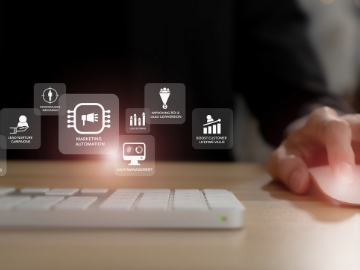The Ultimate Guide to Business Professional Attire for Interviews

Making a great first impression during an interview starts long before you shake hands-it begins with how you're dressed. In professional settings, your appearance often reflects your seriousness, attention to detail, and fit for the role.
That's where understanding business professional attire becomes essential. Whether you're applying for a corporate role or walking into a high-stakes panel interview, dressing appropriately can set you apart from the competition.
This guide will help you navigate the complexities of professional dress codes and prepare the perfect outfit that aligns with both the company culture and your confidence.
What is business professional attire?
When preparing for a job interview, your clothing speaks long before you do. Business professional attire is a structured, polished dress code typically required in more formal industries like finance, law, or corporate offices. It emphasizes neatness, conservatism, and professionalism. For men, this often includes dark suits, button down shirts, and dress shoes. For women, a skirt suit, closed toe heels, and minimal accessories present a clean and commanding look.
Common components include:
Suits (navy, gray, or other dark color tones)
Crisp collared shirts or button-down shirts
Polished dress shoes or closed toe heels
Conservative skirts, pants, and blazers
Minimal, tasteful accessories
Even in industries where casual dress is the norm, many companies still expect traditional business attire during interviews. Remember, your goal is to show you understand professional norms and can present yourself accordingly in a professional environment.
In today's world of hybrid work and video calls, don't let the virtual format fool you-business professional standards still apply. A structured blazer or tailored jackets give off competence, whether in person or onscreen. After all, how you dress affects not just how others perceive you, but how confidently you carry yourself.
How can dressing professionally boost your reputation?
The way you dress for an interview doesn't just reflect personal taste-it signals your understanding of professional culture. Whether you're applying for a job in accounting or marketing, adhering to workplace dress codes shows respect for the company's values. That's why so many companies use dress codes as a way to evaluate a candidate's fit.
When you appear in business professional attire, you're telling the interviewer: "I'm serious about this role." Your polished appearance can subtly influence how your qualifications are perceived. Studies even show that well-dressed candidates are often viewed as more competent, organized, and reliable.
Here's how your outfit can give you an edge:
- First impressions matter: Employers often form opinions in seconds. Professional attire ensures it's a good one.
- Confidence booster: Wearing the right clothes puts you in a focused, assertive mindset.
- Signals preparedness: It shows you researched the company and understand their office culture.
- Shows attention to detail: Well-pressed shirts, matching pants, and neat shoes all signal diligence.
- Reflects adaptability: Especially for entry-level roles, dressing properly proves you're ready for the professional world.
In contrast, casual attire like jeans, t shirts, or sneakers can raise red flags. Unless clearly stated, avoid them for interviews. Even in a startup culture that embraces smart casual or casual dress, err on the side of formality unless told otherwise.
Ultimately, acceptable business attire helps reinforce your credibility. It aligns your professional image with the expectations of the job, increasing your chances of being seen as a good match for the team and company culture.
Dress code confusion: Business casual vs business professional
Navigating office dress codes can feel like decoding a foreign language-especially when terms like business casual, business professional, and smart casual are thrown around. Here's how they differ:
| Dress Code | Key Features | Appropriate Settings |
|---|---|---|
| Business Professional | Dark suits, ties, dress shoes, blouses, skirts, structured blazers | Formal interviews, corporate law firms |
| Business Casual | Sport coats, chinos, flats, neat sweaters, no tie required | Marketing, tech companies, Fridays |
| Smart Casual | Stylish shirts, cardigans, patterned shirts, relaxed pants | Informal client meetings, remote roles |
Many companies blend codes, creating different things under one umbrella. For example, many offices now allow business casual clothing most days, but expect full business professional attire during interviews or executive meetings.
Here are quick tips to avoid confusion:
When in doubt, wear a suit and scale down based on feedback.
Observe how people dress on the company website or LinkedIn.
Reach out to human resources for clarification on expectations.
Check company policies on clothing and attire.
Misreading dress codes can cost you an opportunity-even if your resume shines. Aim to dress one level above the expected standard to be safe. A sport coat, tie, and polished shoes never fail to impress.
Style your work outfits with this simple wardrobe tips
Building your work wardrobe doesn't mean sacrificing your personal style. You can remain true to yourself while still respecting formal expectations. With a few staples and styling tricks, you'll be ready for any interview.
Start with essentials:
2-3 suits in neutral tones
3-5 button down shirts or collared shirts
2 pairs of dress shoes and a pair of flats
2 blazers (classic or sport coat)
3-4 pairs of pants (slacks or tailored)
2 skirts (knee-length pencil or A-line)
Professional accessories (e.g., pocket squares, watches, simple jewelry)
Use these styling tips:
- Mix textures: Combine smooth wool pants with cotton shirts for depth.
- Play with bold colors: Add a pop with a scarf, tie, or pocket square.
- Layer with confidence: Add jackets, sweaters, or structured blazers.
- Keep shoes polished: Dress shoes, heels, and flats should always be clean.
- Choose clothes that fit well: Tailoring makes a world of difference in looking professional.
- Be mindful of video calls: Avoid distracting patterns and opt for clean necklines and solid colors.
These pieces create endless combinations. You can transition from an in-person meeting to a remote one with small tweaks. Self-expression still matters-just keep it subtle and within workplace appropriate boundaries.



